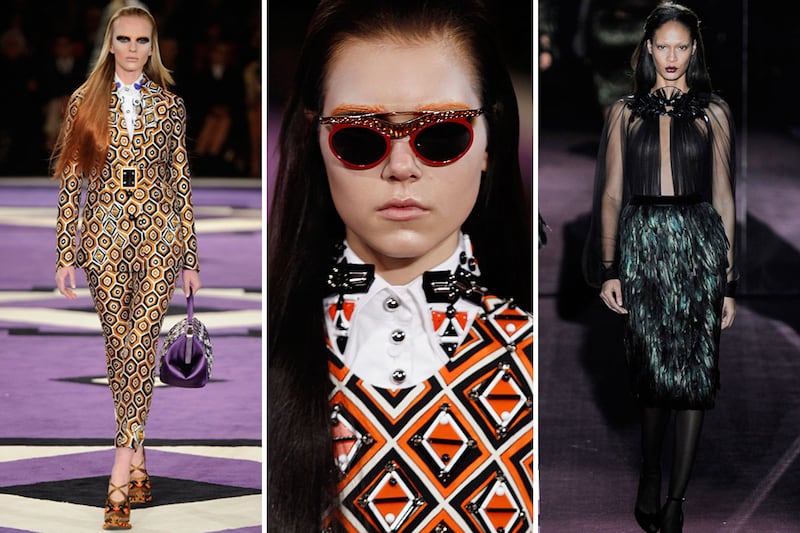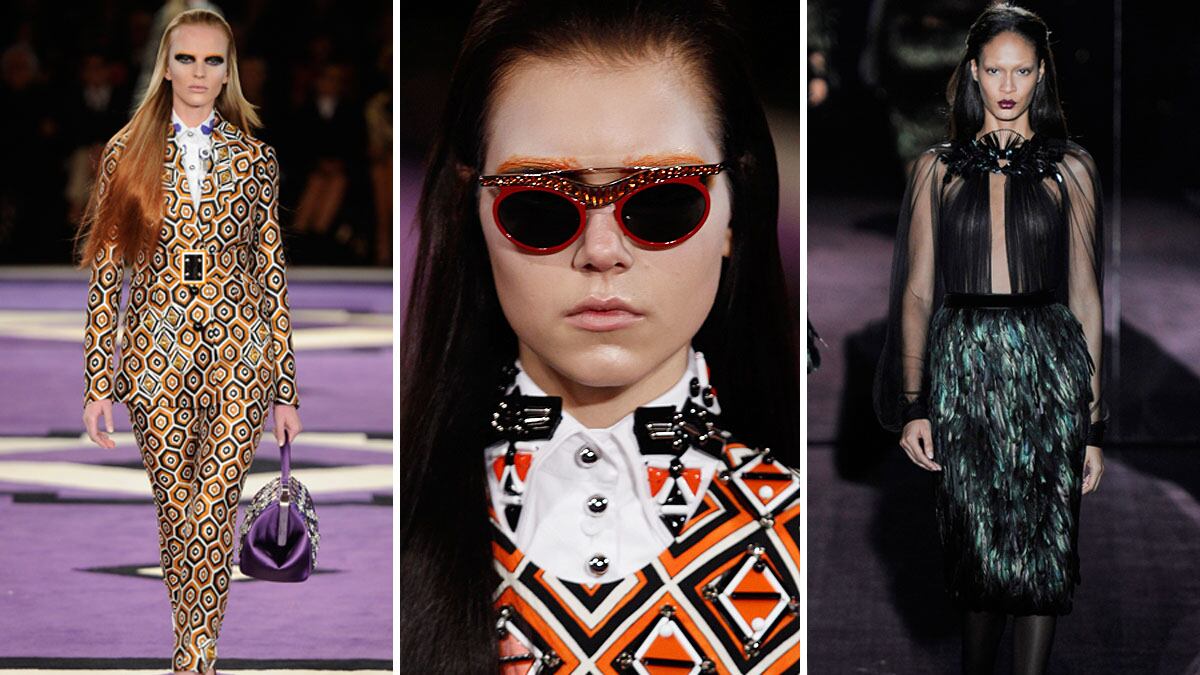
So much of what makes Milan an alluring city is the promise of what lies behind so many of the resolutely stark and uninspiring buildings that dominate its streets. The gray, narrow sidewalks are lined with gray narrow doors. But behind those facades are breathtaking, noble houses filled with the storybook remnants of a cultural history that spans centuries. The hidden courtyard-gardens are lush affairs with manicured boxwood, stone fountains. and the promise of a sweet-smelling spring.
Milan is a tease, a sly seductress. In contrast, so often the styles that emerge from Italy’s fashion capital are aggressively sexed-up—obvious and sometimes even plaintive in their desire to entice.
But in the past few days, since the Fall 2012 collections opened on Wednesday, the hidden pleasures and the aloof beauty of Milan have been on display. Amidst the curious evocations of Max Mara’s floor-dragging trousers and Moschino’s Wild West cadets—whose cowboy hats with wide, tight chinstraps made the models look like cowgirls post-facelift—Gucci's Frida Giannini emphasized the ferocious strength and sensuality of women with a collection that was dark, thought-provoking, and coolly feminine. And Miuccia Prada delivered a collection that reflected her distinctly ambivalent expression of beauty and sex appeal with vaguely unsettling colors and clunky spangles adorning the hems of cropped pants and elongated bodices.
ADVERTISEMENT
Designers Pierpaolo Piccioli and Maria Grazia Chiuri celebrated the opening of their new Valentino store—created by architect David Chipperfield—with a lavish dinner party behind one of Milan's plain, gray doors.
And Jil Sander, who gave life to an aesthetic of restraint and refusal, confirmed that she will return to the label that bears her name following the departure of creative director Raf Simons.
The news that Sander will return to the design limelight after a seven-year absence threatened to distract from the varied—and often stunning—work on the runways right now. The promise of possibilities is always more potent than reality, after all. But a cooler head prevailed when one retailer noted that Sander faces an unusual and challenging dilemma. She is returning to a brand that has thrived in her absence—one that has been highly influential and commercially successful under someone else. She is not a white knight arriving to rescue a failing company. In some ways, the company may be the salvation of Sander—a talented designer who has been wandering in the wilderness.
Fashion has marched on without Sander; she will have to catch up to it. And her beloved minimalism is not the mighty allure that it once was. In a world where high end fashion's most enthusiastic consumers are no longer in the West—and often more interested in flashy logos than quaint stories about artisans, history, and hand-craftsmanship—subtlety can be a liability, Valentino chairman Stefano Sassi remarked over dinner during the company’s celebration of architecture and retail.
In the Palazzo Crespi, tables were set amidst rooms thick with old-world paintings and glass vitrines of porcelains, cameos, and tiny handpainted china boxes. There were tapestries, lavish gilding, breathtaking crystal chandeliers and grand women with magnificent cleavage and even more significant jewels. The aroma of generations of wealth—not money, not people, but wealth—wafted through each room like a cloud of rare perfume. The evening was one of unabashed opulence behind closed doors.
This is the balancing act of luxury brands in the new economy: managing the desire of the recently rich to show off, with the necessity of the old rich not to brag. And while that might not have been the driving inspiration behind the collections at Gucci and Prada, both of them seemed to acknowledge this reality.
At Gucci, not every garment was perfectly calibrated. There were curious proportions with saggy leather jodhpurs and nipped-waist jackets with tiny peplums. But the mood that Giannini created spoke eloquently of the times. She evoked a woman of power and confidence, femininity, and intelligence—but one who doesn’t give up sex appeal. Images of golden flowers, just slightly past their perfect prime, glowed from the flowing hemlines of black dresses. Shimmering black feathers covered a simple cigarette skirt. Lush embroidery and embellishment covered the neckline of filmy tulle gowns.
The collection was overtly rich but without the giddiness—and innocence—of youth.
Indeed, who wants to exude innocence in these times of economic upheaval, violence in Syria, and political distress? To look strong, controlled, smart, and yes, optimistic, seem like the more reasonable alternatives.
It is a time when Prada’s ambivalence and complexity seems so right. The collection she put on the runway Thursday night was filled with the signatures she has established over the years: the off-kilter colors, the dizzying patterns, the gumball-size decoration, the whispers of “ugly chic.” Everything was familiar, but nothing spoke in the same way that it has in the past.
Her trims suits in prints of mustard yellow and bright tangerine were not as abrasive as the colors suggest but rather intriguing. Perhaps over time, our eye has adjusted to Prada’s offbeat hues. The black rhinestones and gems on the hems of cropped trousers didn’t read as ostentatious. Paired with long vests, which were also embellished, they stirred up notions about religious uniforms, rituals, and rapture.
Prada, along with Elsa Schiaparelli, will be the subject of the next exhibition at the Metropolitan Museum of Art’s Costume Institute. The choice, said curator Harold Koda during a preview in Milan, was in part because “it was important to see the achievements of women in a field that caters to women.”
In her collection for fall, Prada offers women clothes that entice the eye with color and sparkle, but that also tantalize the mind. These garments, in their own eccentric way, allude to the reality that women are almost always more interesting than their clothes.






